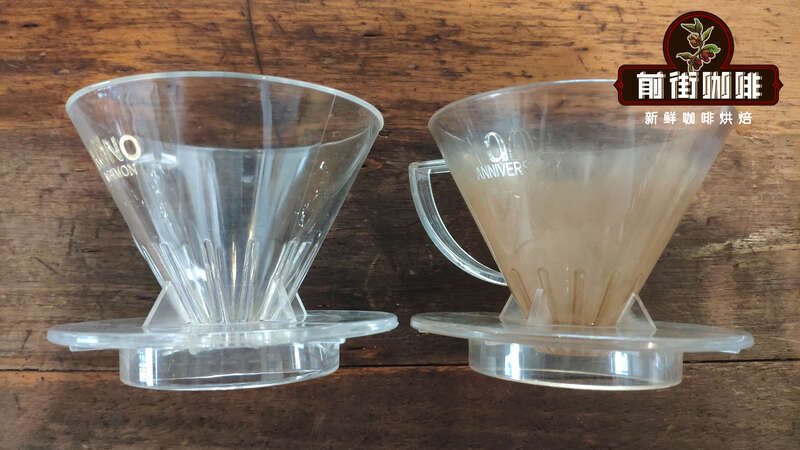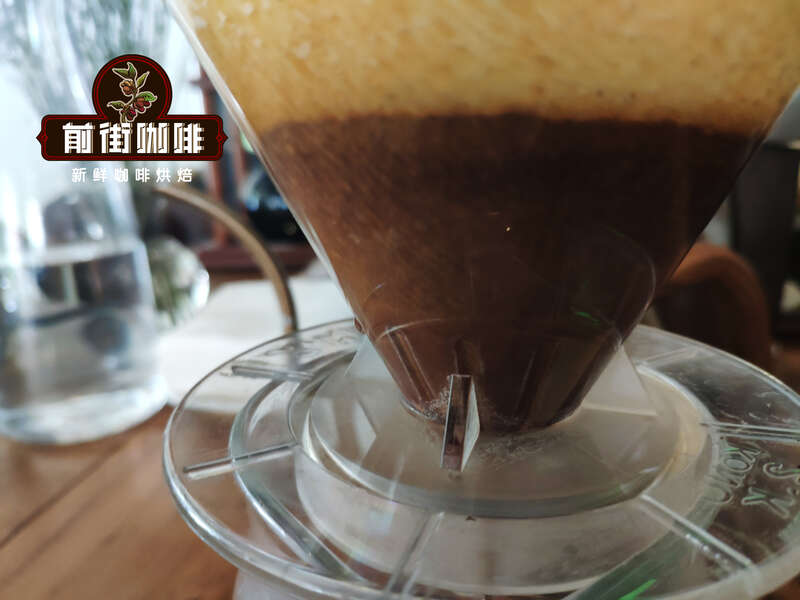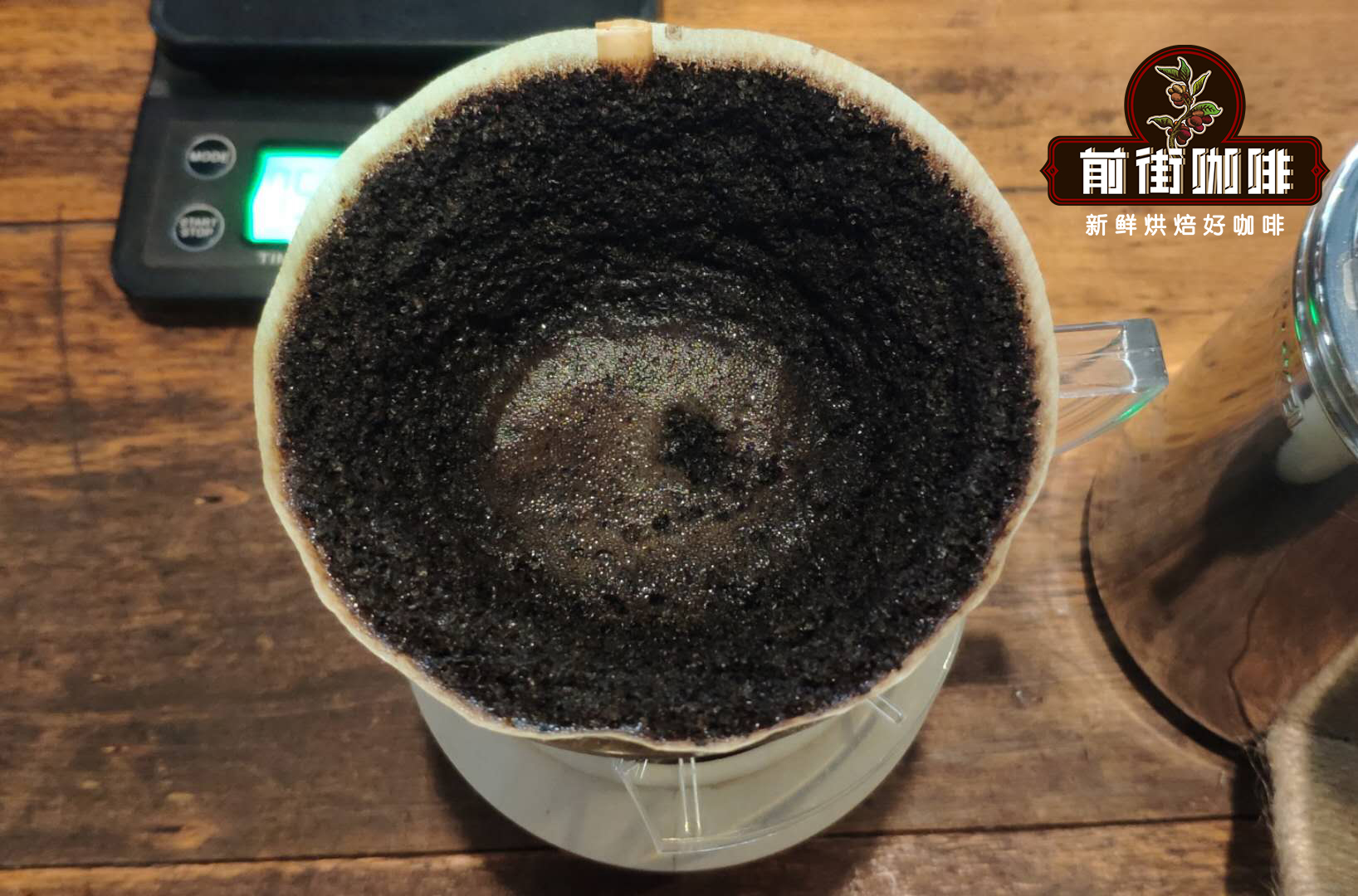How to choose the material of hand coffee filter cup? Does the material of the filter cup have a great influence on coffee?

As long as people pour coffee on it, they keep talking about filter cups. Flat bottom or conical shape, the best size, choose the right filter cup. There are many variables to consider.
However, one of the less discussed points is the material used to construct the filter cup. Although many people think this is not important, it does affect the way coffee is extracted.
Which variables affect the cooking process?
Pouring coffee is a percolation method in which hot water is poured on the coffee grounds and filtered into the container through the coffee grounds. When the water passes through the coffee grounds, it extracts the soluble flavor compounds in the coffee.
However, the filter cup (usually paper, but can also be a mesh or cloth) prevents oil and sediment from passing through, usually making the cup lighter and cleaner.
Oil, acids and carbohydrates (and many other flavor compounds) contribute to the final taste and aroma of the cup. Their development and extraction depends on many different variables, including your cooking ratio, cooking time, water temperature, and the material of the filter cup and filter cup.
By adjusting these factors and other conditions for coffee extraction, you can use different cups even if you use the same coffee beans. For example, if the coffee takes longer to brew, it will naturally spend more time interacting with the coffee grounds, so it will extract more flavor compounds. Similarly, if the brewing temperature increases, the solubility and extraction rate will increase.

Filter cup material and brewing temperature
Water temperature is considered to be an important factor affecting extraction. Different filter cup materials will retain less or more heat during brewing, thus affecting your cup.
Jonathan Gagn é is an astrophysics expert and coffee lover from Montreal, Canada. He runs a blog called Coffee ad Astra and will publish a book on the physics of filtering coffee later this year.
He told me that the material of the filter cup would affect the heat preservation in the extraction process. Different materials have different "thermal mass" and insulation levels, which means that they conduct and retain heat in different ways.
The key factor here is "thermal mass", which is the number that determines how much heat a material must absorb before the temperature rises. For example, concrete and stone must absorb a lot of heat before they begin to rise in temperature. They have high thermal mass.
However, materials such as wood and straw have lower thermal mass, which means they heat up much faster (and in some cases catch fire).
Jonathan says plastic and stainless steel filter cups have lower thermal mass and lighter weight than other materials. This means they heat up faster and eventually "steal" less heat. Instead, materials such as glass and ceramics take longer to reach the same temperature, eventually taking more calories away from coffee.
But Jonathan adds that insulation is also important. "Ceramics, glass and stainless steel all have poor thermal insulation, so they transfer some of the heat to the surrounding air and then absorb more heat from the brewing to achieve balance again," he explained. " "in the end, only a few materials have low thermal mass and good thermal insulation."
Arnout de la Rambelje is in charge of sales at Moccamaster. He told me that Moccamaster is very popular in Europe, where the temperature will drop in winter. This means that users tend to maintain a high brewing temperature.
Since 1994, the filter cup support of Moccamaster has been made of polypropylene. Arnout told me that the support consists of two layers of plastic (flat and ribbed), forming an "airbag" between the coffee filter cup and its support. 'it provides excellent insulation,'he said.
This means that in winter, when the temperature drops, Moccamaster's polypropylene stent can maintain a stable temperature throughout the extraction process, thereby increasing the consistency and eventually improving the quality of the final cup.

Effect of temperature on stability
Cau ã Sperling is a barista, lecturer and co-owner of Fora da Lei in Sao Paulo, Brazil. He told me that he offered customers a variety of filter cup options in the coffee shop.
However, Cau ã said his goal was to maintain consistency and "thermal balance" between filter cups. He explained that heat balance means that "the elements in the brewing system stop interacting with each other and stabilize the extraction." This is the goal we pursue in manual brewing.
Jonathan believes that thermal insulation helps to improve stability. "better thermal insulation can stabilize the temperature from the beginning of brewing to the end.
"even if you lower the kettle temperature and use a high insulation filter cup, the shape of the cup will be different from that of the higher kettle temperature and the lower insulation filter cup."
This also ensures repeatable results, says Cau ã. "it is easier to repeat the coffee formula in a stable filter cup.
"in the final analysis, what is this about? It takes me less energy and allows me to make coffee in the same way over and over again. "
However, this does not mean that non-plastic filter cups can guarantee poor results. Heavy materials such as glass and porcelain can be preheated to prevent them from absorbing heat from brewing.
Stainless steel and copper can also be preheated, but because they quickly radiate heat into the environment, they should be preheated a few seconds before use.
Cau ã said: "plastic filter cups provide a more stable temperature and less work. Glass and ceramics are almost the same, and more energy is needed to heat them.
"when this happens, I adjust the brewing process, and my first pour is often done at a lower temperature."
Jonathan added that with "more experience" and "better control of variables", he noticed that different materials produced very different cup contours.
"Materials such as glass or ceramics produce weaker, more sour cups than plastic," he added. " This is because lower insulation leads to a lower overall brewing temperature, which highlights acidity and reduces sweetness and flavor.
The bottom line is simple: the filter cup material will affect your cooking temperature, which in turn affects the extraction effect and changes the outline of your cup.
However, when choosing a filter cup, it should be kept in mind that temperature is only a factor. Ask yourself if you want to try, or if you want something simple and consistent. In addition, your lifestyle, skill level and budget will all play a role. For example, glass filter cups are not suitable for people who brew a lot of coffee on the road.
These factors should be taken into account when deciding which material to use, and finally repeatability. Materials with low thermal mass (such as plastic) will mean that you can easily copy the same cup of coffee, while glass and ceramics are more likely to underextract and produce more acidic coffee.
Important Notice :
前街咖啡 FrontStreet Coffee has moved to new addredd:
FrontStreet Coffee Address: 315,Donghua East Road,GuangZhou
Tel:020 38364473
- Prev

South Minas, Brazil & how to brew Brazilian half-sun coffee beans in Syrador boutique coffee producing area
Professional coffee knowledge exchange more coffee bean information Please pay attention to the coffee workshop (Wechat official account cafe_style) the higher the altitude of coffee beans, the smaller the density and hardness of coffee beans, and the more coffee bean flavor is formed by the temperature difference between day and night at high altitude. Brazil has a low altitude, flat and monotonous landform, lack of microclimate, and is used to exposure to the sun.
- Next

How to brew Yunnan tin card varieties of small-grain coffee beans during the development of Yunnan boutique coffee industry?
Professional coffee knowledge exchange more information about coffee beans Please follow the Coffee Workshop (Wechat official account cafe_style) A movie "coming Home soon" with the theme of Yunnan Coffee was released last month, which sparked discussion in the coffee circle. There are many scenes that resonate with coffee lovers. In the movie, a protagonist describes Yunnan coffee as follows: importing tropical fruits.
Related
- Beginners will see the "Coffee pull flower" guide!
- What is the difference between ice blog purified milk and ordinary milk coffee?
- Why is the Philippines the largest producer of crops in Liberia?
- For coffee extraction, should the fine powder be retained?
- How does extracted espresso fill pressed powder? How much strength does it take to press the powder?
- How to make jasmine cold extract coffee? Is the jasmine + latte good?
- Will this little toy really make the coffee taste better? How does Lily Drip affect coffee extraction?
- Will the action of slapping the filter cup also affect coffee extraction?
- What's the difference between powder-to-water ratio and powder-to-liquid ratio?
- What is the Ethiopian local species? What does it have to do with Heirloom native species?

